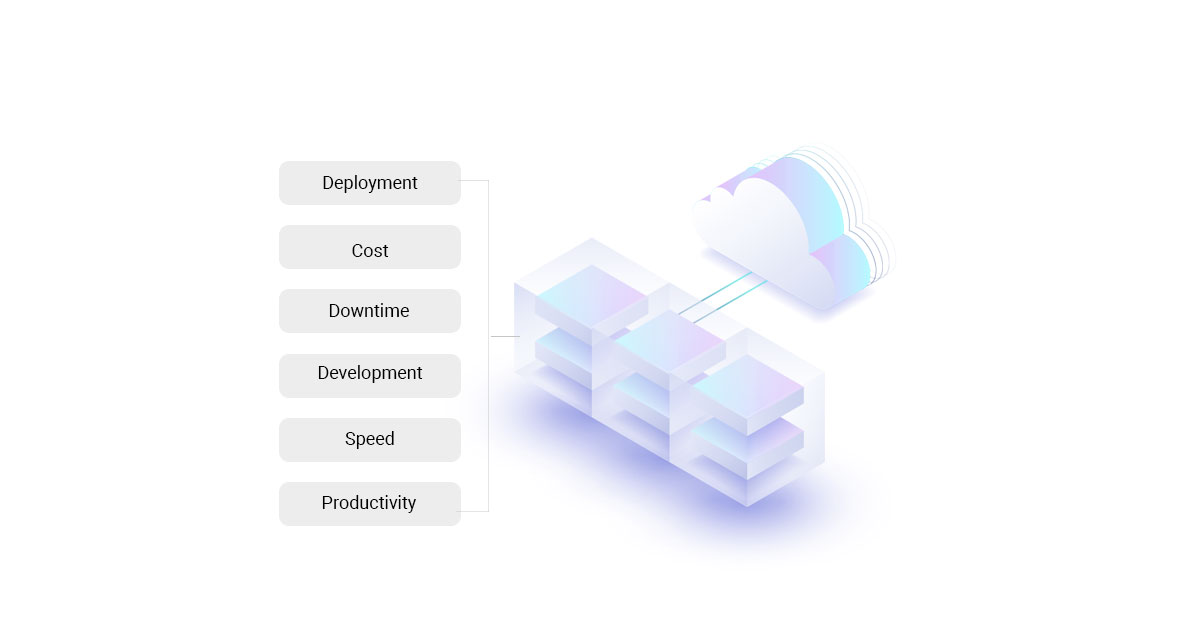



Originally devised to run event-driven functions without managing the underlying hardware or software stack, serverless architecture has evolved out of necessity.
Here is a more intriguing definition. The fact that serverless architecture enables software engineering teams to focus on coding than managing complex infrastructure. We are talking about developers breaking down their products into small manageable pieces. Building prototypes in an agile fashion, and getting instant user feedback about possible product optimizations.
A growing cadre of independent software vendors (ISVs) is seeking opportunities to leverage serverless computing for their products. This is to achieve a shift from a resource-oriented approach to function-driven solutions.
Companies that are already implementing this change aim to speed up their delivery and validate their products rapidly. They are tackling market demands more efficiently while reducing development costs by optimizing resource requirements.
Of course, every product manager must love the serverless architecture approach. Serverless architecture promises a reduction in the time/cost required to roll out new features. Thus, achieving better response times for handling customer requests.
What is Serverless Architecture?
A reason to adopt serverless architectures – your software engineering teams can build agile applications and stay competitive by responding to changing customer requirements faster.
Imagine your software engineering team builds an application. It focuses purely on the individual functions of your application code, packaging them in containers for deployment. All this without shouldering the complexity of infrastructure management. Your application will indeed work on servers. However, the server management including provisioning, scaling, maintenance is managed by the cloud service providers. This is the power of serverless architectures for your business.
5 Benefits of Serverless Architecture and Why it is Ideal for Product Owners
Using serverless architectures for your business applications comes with a lot of benefits. Here are the top 5 benefits of using serverless architectures for your business applications.
Faster Time-to-Market
The number one benefit of serverless architecture is an accelerated time-to-market. Faster time-to-market is an outcome of an accelerated engineering process in SDLC. This includes facilitating faster development and allowing greater developer focus on application code. Instead of complex infrastructures to less effort expended in managing the scaling and allocating of server resources. Such an efficient procedural funnel enables developers to build their applications and get the product in the market sooner.
Reduced Dependence (and Risk) on Resources
Even in a high-velocity environment, teams can still get the output they want by spinning up more clusters that provide the required resources. All this without having to worry about the dependence on available infrastructure. Developers can tune their applications for peak performance and load times with serverless architectures. No more challenges of running out of resources when processing requests rapidly or perhaps at a higher volume.
Reduced Operational Cost
Serverless computing approach offers a pay-per-use model. This allows the application to become inherently scalable with a minimum initial investment. As a result, with the help of serverless architectures, it is easier for the product owners to optimize budgets while worrying significantly less about the marketability and resource-related operational costs.
More Bandwidth to Focus on Creative Concepts
With serverless architectures doing your complex work, your software engineering teams could focus more on the productive and challenging work while being creative. Serverless computing gives your team more time to develop the best ideas and maximize value creation for your business applications. For product owners, this means that they can try out newer ideas, experiment with emerging technologies, and be able to assess the feasibility of such initiatives through prototypes or early iterations.
Ease of Deployment Process
Serverless computing makes continuous deployment easier. Product managers can use the serverless approach to test their applications in production by enabling features and letting them run without changing too many other things. Besides, the functions can be deployed to some users with low latency while having the same version running elsewhere enabling powerful strategies like A/B testing for concept validation, something that every product owner wants.
Serverless Architecture is a Need, Not a Choice
An Insight into Traditional vs. Serverless Approaches
Deployment
Traditional approaches to hosting a web application running on a server or cluster of servers entail the deployment of code and the subsequent configuration of a load balancer to route traffic to the instances.
On the contrary, serverless computing allows for seamless deployment of a piece of code without incurring the costs of setting up a load balancer or even using an API gateway. The developer focuses on the code that makes up the application while abstracting away server management and deployment tasks.
Downtime
With traditional approaches, deploying an update might require downtime for all services across all servers and clusters that make up the service.
With serverless architecture, however, updates could go live without any downtime as they can be deployed over time while the application is running.
Cost
Traditional approaches to application deployment include ongoing costs for maintaining the infrastructure, which can be unattractive for traditional business models.
Serverless computing solutions are more cost-effective than on-premise server deployments. They do not include capital expenditure on servers initially and ongoing operating expenses for hardware maintenance and updates. The pay-as-you-go model is uber-efficient, with the enterprise incurring costs only when their application is in use by actual customers.
Speed
Serverless architectures can help considerably with the speed of development by abstracting away infrastructure management tasks so that developers can concentrate on building the application’s core functionality. But there is more to it. As compared to its traditional counterparts, serverless architecture may be more helpful in improving customers' experiences by facilitating quicker response time for request handling — an unbeatable advantage for product owners addressing the needs of demanding end-users.
Productivity
Serverless computing approaches make software engineering teams more productive. Coding is often faster as compared to traditional approaches due to their clean separation of concerns. This is primarily because, in serverless architecture solutions mentioned above, the developer only thinks about coding the business logic and does not have to spend time on infrastructural concerns such as cluster management.
The bottom line is that serverless architecture approaches to application deployment are more flexible and scalable for modern businesses as they are focused on delivering continuously, efficiently, and reliably.
How Product Managers Can Leverage the Opportunity of Serverless Architectures?
Product managers benefit from this paradigm of serverless architectures by not worrying about scaling up or down, allocating initial resources for any new application, or spending time on infrastructure-related constraints during the development stage.
Innovation Explosion
In the wake of serverless architecture solutions, individuals and companies are now able to create quicker iterations of their applications that are equipped with more features and have unique value propositions. This can open the doors for innovation and agility.
The Case for Scalability
Serverless computing also allows products to scale easily. They deliver a scalable environment that scales with the user's needs and demands. With no infrastructure to manage or provision, this approach allows owners the flexibility they need when developing and enables them to test their ideas with minimal investments.
Return of Investment
With minimal investments required in setting up the application in serverless architectures, it is easy for developers to make improvements and test new ideas while optimizing spend on resources.
Know the Downsides of Serverless Architectures
Well, nothing is 100% perfect, not even serverless architecture.
Tight Coupling
The ability to use serverless computing solutions effectively requires a higher degree of knowledge of cloud services than traditional approaches. A well-structured application based on serverless architectures can reduce this problem. As the developer has more choice in what functions to use, this can increase application complexity and demand more skills to architect, develop, and test. This calls for a need for a talented and experienced solution architect.
Security
Concerns are emerging about the security of applications developed with serverless architectures because of the inherently greater complexity of securing the entire software supply chain. Any vulnerabilities that are exposed could introduce security problems deep in the application at the code level. Security testing strategies for these applications would have to be much more comprehensive and visionary to protect against such concerns.
Summary and Conclusion
Serverless computing has the potential to eliminate some of the crucial complexity associated with traditional cloud-based applications to make application development faster, more agile, and budget-friendly. In this new paradigm, software engineering teams can focus on product functionality and business outcome rather than on server constraints. And that is a win-win situation for both product owners and product developers.
Xoriant brings decades of advanced product engineering expertise to help modernize your products and systems, and deliver the software your customers need to win in the digital marketplace. We partner with leading cloud providers and ecosystem partners to help you deliver exciting services and maximize technology investments.
Want to accelerate your software engineering process?
Connect with Xoriant Engineering Experts





 View Previous Blog
View Previous Blog




